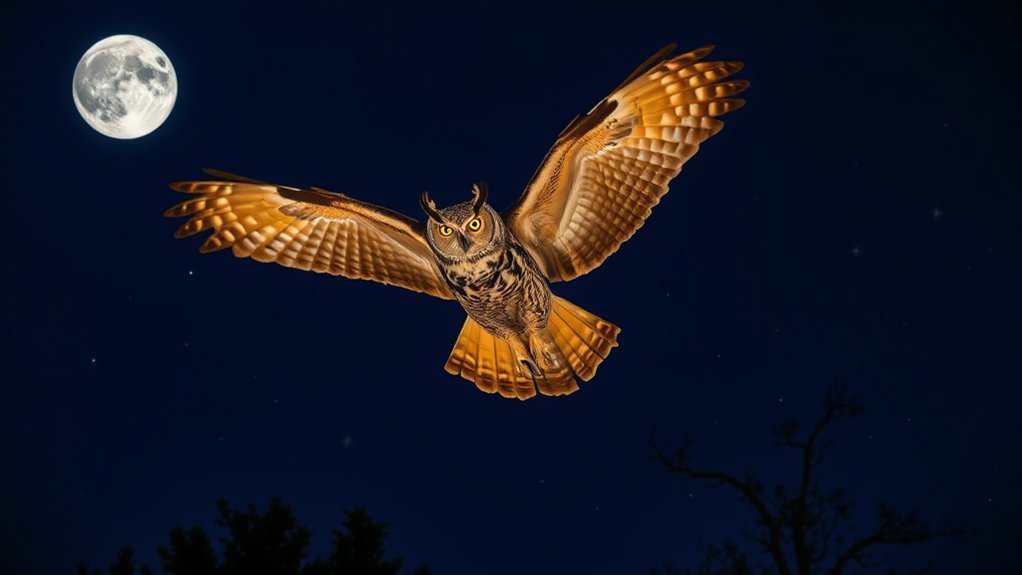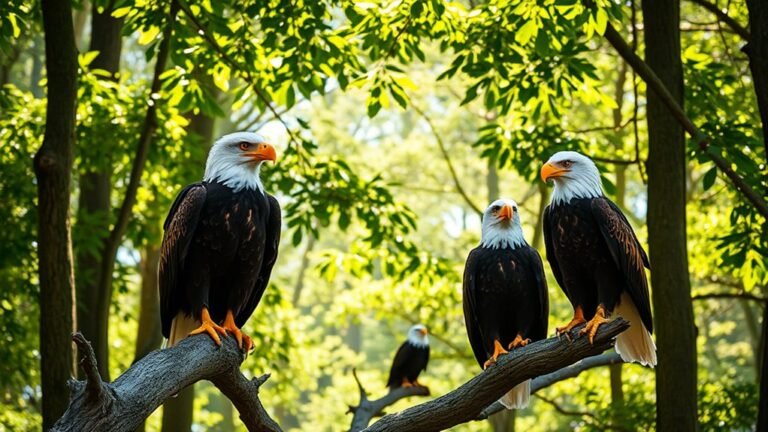Can Birds Fly at Night? Nocturnal Flyers Explored
Some birds can fly at night, and they have special skills that help them find food and move around in darkness. These birds have better night vision compared to other species. They can see well in low light, which helps them spot prey.
Many nocturnal birds also fly quietly. They have feathers that reduce noise, allowing them to approach targets without being heard. These adaptations make them successful hunters after sunset.
Birds like owls and nightjars are examples of creatures that thrive in the dark. Their unique features enable them to locate food, avoid predators, and navigate through the night. Exploring their traits helps us understand how they survive in environments where others may struggle.
Key Takeaways
Many birds, like owls and nightjars, are adapted to fly and hunt at night. They have special features that help them thrive in low light. Nocturnal birds have excellent night vision due to unique rod cells in their eyes, which allow them to see well when it's dark.
Owls are famous for flying silently and having sharp hearing. These abilities help them find and catch prey in the dark. Some nocturnal birds even use echolocation to detect their surroundings and locate food in the night sky.
When it comes to migration, nocturnal birds choose their routes carefully. They avoid areas with too much urban light and bad weather, ensuring a safer journey.
The Science of Nocturnal Flight
Many birds are active during the day, but some fly at night. Night birds have special features that help them thrive in low light. They've keen night vision, which allows them to see movement and shapes even when it's dark. Their eyes have many rod cells, which help them see well under the moonlight.
Some night birds also have broad wings and light bodies. This helps them fly quietly as they hunt for food.
Understanding these unique traits shows how birds adapt to their surroundings. This knowledge can enhance your appreciation for nature and may inspire you to connect with others who enjoy learning about wildlife.
Types of Nocturnal Birds
Nocturnal birds include several species with specific adaptations for nighttime life. Owls are the most recognizable.
They've excellent hearing and special feathers that allow them to fly silently. These traits help them hunt by listening for their prey.
Another interesting group is nightjars. They've cryptic feathers that blend in with their environment.
Nightjars can stay still for long periods, making it hard for predators to spot them.
Both owls and nightjars are important for their ecosystems.
Observing these birds at night can enhance your understanding of avian diversity and the beauty of nature after dark.
Adaptations for Nighttime Navigation
As night arrives, birds that thrive in dark conditions showcase unique traits that improve their navigation abilities.
Here are some key adaptations:
- Night vision: Specialized cells in their eyes help them see better in low light.
- Echolocation: Some birds use sound to locate objects and identify their surroundings.
- Silent flight: Their wing structure allows them to fly quietly, aiding in stealthy movement.
- Magnetic sensing: Certain birds can detect the Earth's magnetic field, which helps them navigate over long distances.
These traits highlight the incredible way birds have adapted to their environment.
Learning about these skills makes us appreciate the beauty of nature and the amazing capabilities of these birds.
Hunting and Feeding Strategies
Many birds that hunt at night have developed special methods to find and catch prey. For example, owls have unique features that help them hunt. Their ears are placed unevenly, which allows them to hear sounds precisely and locate rodents even in total silence.
Nocturnal birds like the nighthawk depend on their sharp eyesight and flying skills to find food at night. They swoop down to catch insects mid-air and often fly low to surprise their prey.
Other nighttime hunters, such as the common potoo, use their ability to blend in with their surroundings. They stay still until it's the right time to strike.
These hunting methods improve their chances of success and show the different ways birds have adapted to thrive in the dark.
Migration Patterns of Nocturnal Flyers
Some birds that fly at night show special migration patterns. Here are the key points about their journeys:
- Migratory Routes – Nocturnal birds follow set paths to stay safe from predators.
- Migration Challenges – They deal with issues like city lights and bad weather, which can confuse their navigation.
- Altitude Shifts – Many birds change their flight height to avoid bumps in the air and save energy.
- Social Behaviors – Some birds travel in groups for protection and support during migration.
Learning about these patterns reveals how strong and adaptable nocturnal birds are, helping us appreciate their unique ways of life.
Frequently Asked Questions
Do All Nocturnal Birds Have Excellent Night Vision?
Not all nocturnal birds have excellent night vision, but many do. These birds can see better in low light, which helps them hunt and find their way. Their night vision adaptations support their survival in specific environments.
Can Non-Nocturnal Birds Fly at Night?
Non-nocturnal birds can fly at night. Their ability to see in low light is limited. As a result, they may follow familiar routes. Some use moonlight to help them find their way.
How Do Urban Lights Affect Nocturnal Flight?
Urban lights affect the way birds fly at night. These lights cause confusion and disorientation. They block natural signals birds use to navigate. As a result, birds may fly in odd patterns and face higher chances of crashing into buildings or other objects. Urban planners should consider these impacts on birds when designing city spaces. Protecting wildlife is important for a balanced ecosystem.
Are There Any Migratory Nocturnal Birds?
Some migratory birds are active at night. Examples include the Common Nighthawk and different types of owls. These birds fly during the night to lower the chances of being hunted and to take advantage of cooler temperatures.
Do Nocturnal Birds Sleep During the Day?
Nocturnal birds usually sleep during the day. This sleep pattern helps them save energy for nighttime activities. They are active at night, foraging for food and breeding. During the day, they rest and stay safe from predators.

Ava is a bird enthusiast and nature lover who has spent countless hours observing and learning about the fascinating world of birds. With a passion for sharing her knowledge and inspiring others to appreciate the beauty of birds, Ava writes about her experiences and insights on avianadmirer.com.







